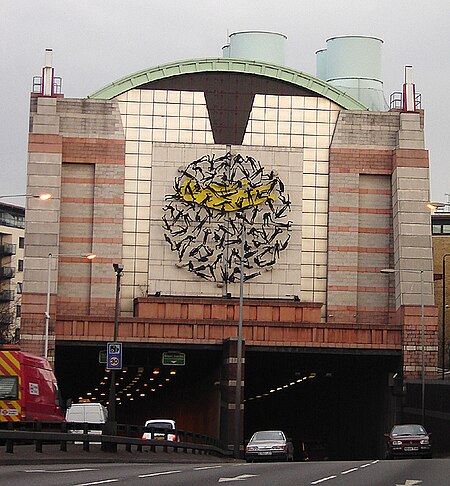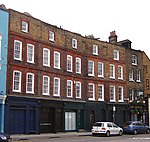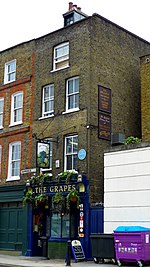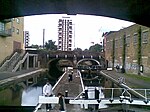Limehouse Link tunnel
LimehouseRoad tunnels in EnglandStreets in the London Borough of Tower HamletsTransport in the London Borough of Tower HamletsTunnels completed in 1993 ... and 2 more
Tunnels in LondonUse British English from June 2015

The Limehouse Link tunnel is a 1.1-mile (1.8 km) long tunnel under Limehouse in East London on the A1203 road. The tunnel links the eastern end of The Highway to Canary Wharf in London Docklands. Built between 1989 and 1993 at a cost of £293,000,000 it has been calculated as the most expensive road scheme in Britain per mile, working out at £50,500 per foot at 2011 prices. It is the second largest non-estuarial road tunnel in the UK, after the Hindhead Tunnel in Surrey.
Excerpt from the Wikipedia article Limehouse Link tunnel (License: CC BY-SA 3.0, Authors, Images).Limehouse Link tunnel
Heide,
Geographical coordinates (GPS) Address Nearby Places Show on map
Geographical coordinates (GPS)
| Latitude | Longitude |
|---|---|
| N 51.511 ° | E -0.033 ° |
Address
Heide 13
42499
Nordrhein-Westfalen, Deutschland
Open on Google Maps








